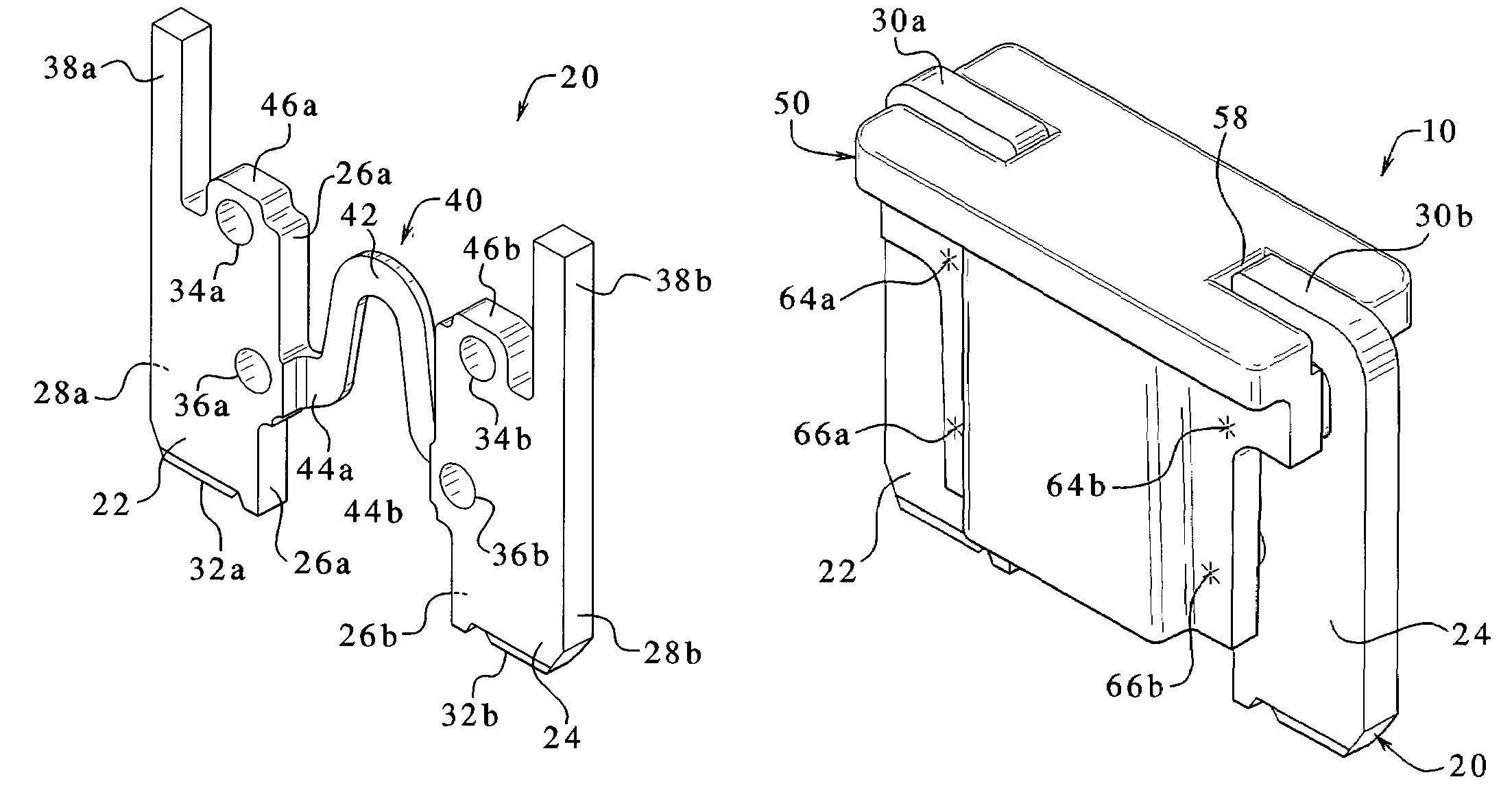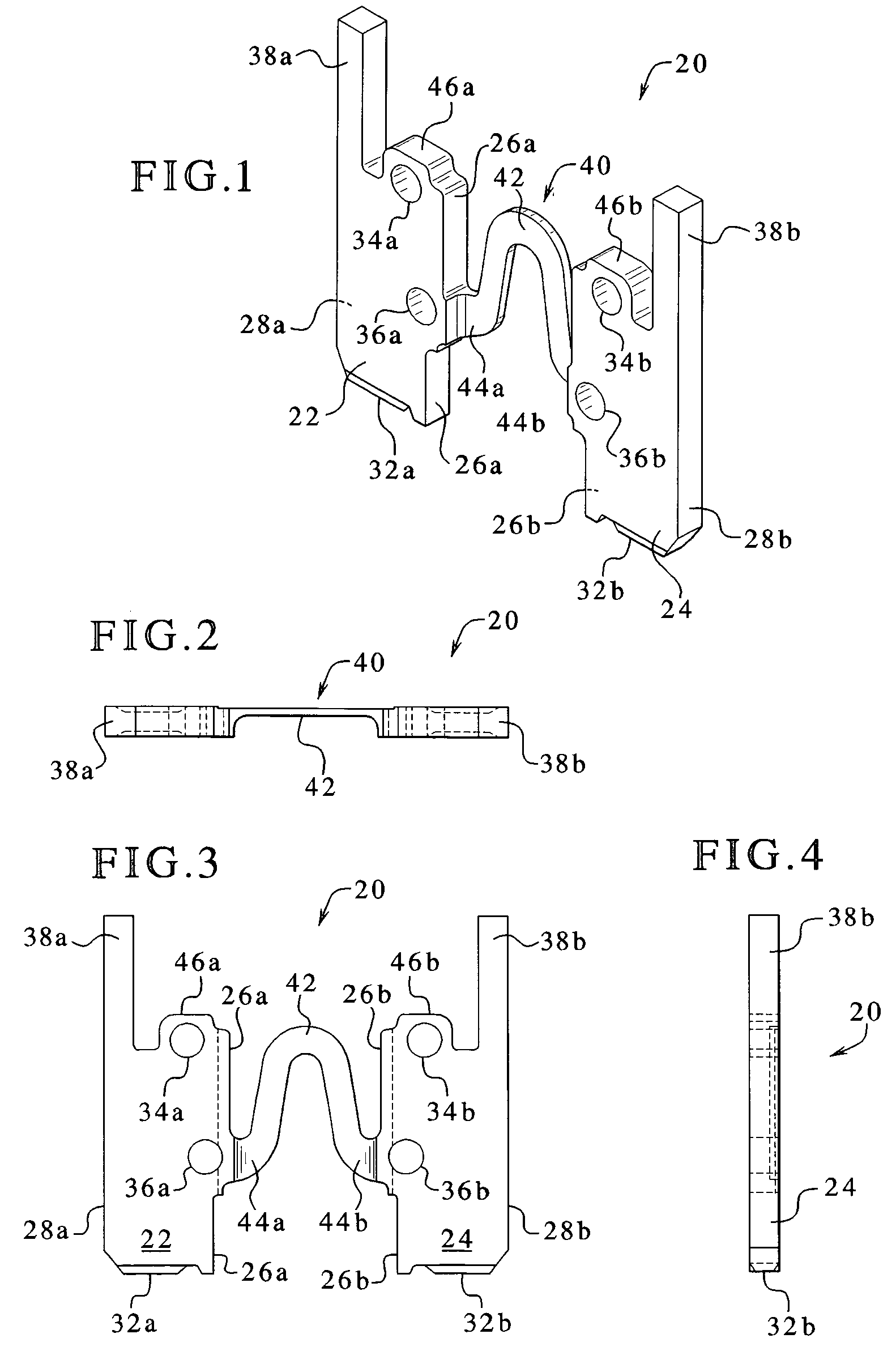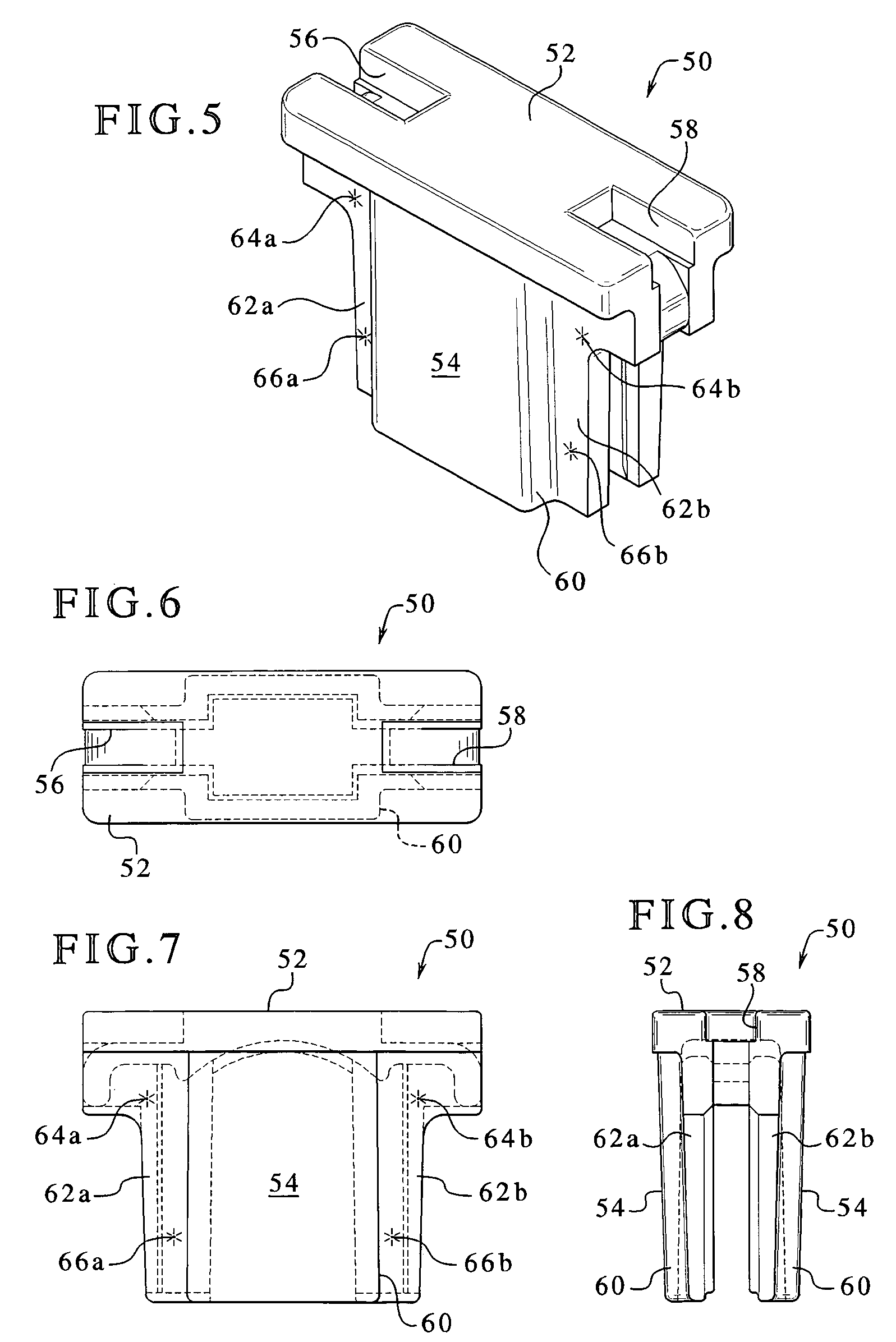Low profile automotive fuse
a low-profile, fuse technology, applied in the direction of basic electric elements, emergency protective devices, electrical equipment, etc., can solve the problems of less effective staking or attachment process, more cumbersome insertion and removal, and difficulty in removing the fuse block, so as to improve the fuse and improve the effect of low profil
- Summary
- Abstract
- Description
- Claims
- Application Information
AI Technical Summary
Benefits of technology
Problems solved by technology
Method used
Image
Examples
Embodiment Construction
[0038]Referring now to FIGS. 1 to 12, one embodiment of a fuse 10 of the present invention is illustrated. Fuse 10 includes a conductive or metal portion 20 and an insulative housing 50. Conductive or metal portion 20 can be made of any suitable conductive material, such as metal. In various embodiments, conductive portion 20 is made of copper, aluminum, zinc, nickel, tin, gold, silver and any alloys or combinations thereof. In alternative embodiments, the conductive portion 20 or sections thereof can be plated with one or more metal or conductive plating.
[0039]Insulative housing 50 is made of any suitable plastic or non-conductive material. For example, housing 50 can be made of any of the following materials: polycarbonate, polyester, polyethylene, polypropylene, polystyrene, polyvinylchloride, polyvinylidene chloride, acrylic, nylon, phenolic, polysulfone and any combination or derivative thereof. In one embodiment, conductive portion 20 is stamped, wire electrical discharge mach...
PUM
 Login to View More
Login to View More Abstract
Description
Claims
Application Information
 Login to View More
Login to View More - R&D
- Intellectual Property
- Life Sciences
- Materials
- Tech Scout
- Unparalleled Data Quality
- Higher Quality Content
- 60% Fewer Hallucinations
Browse by: Latest US Patents, China's latest patents, Technical Efficacy Thesaurus, Application Domain, Technology Topic, Popular Technical Reports.
© 2025 PatSnap. All rights reserved.Legal|Privacy policy|Modern Slavery Act Transparency Statement|Sitemap|About US| Contact US: help@patsnap.com



